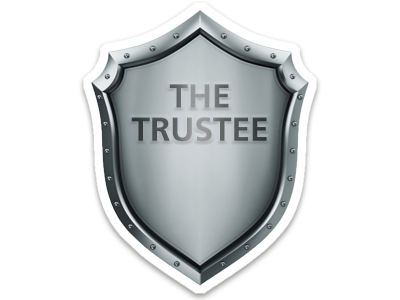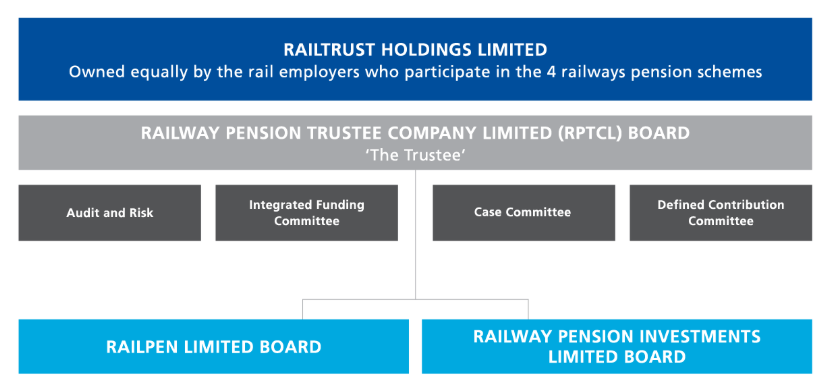Structure of the Trustee Board and Committees
Some of the Trustees' responsibilities are delegated to specialist committees. Here you can learn about all of the current committees and what they do.
The Trustee’s full name is Railway Pension Trustee Company Limited (RPTCL).
The Trustee Company is 100% owned by a holding company, called Railtrust Holdings Limited. Railtrust Holdings is owned equally by the rail employers who participate in the 4 railways pension schemes. You can read more about the Trustee's structure below.
The Trustee has significant responsibilities. In order to ensure its responsibilities are carried out expertly and efficiently, the Trustee delegates in several different ways. This includes to:
You can read more about these subsidiaries and specialist committees below.
You can read more about the Trustee's responsibilities, on the roles and responsibilities page.
First, the Trustee has 2 wholly owned subsidiary companies that it delegates duties to:

The Trustee also delegates some of its duties to committees. This means that the Board can focus on more strategic issues at full meetings, so it can make the most of the time available.
Committees also allow individual Trustee Directors to utilise more of their skills and expertise in specific areas of Trustee business. You can find out which Trustee Director is a member of which committee on the meet the Trustee Board members page.
There are 4 main committees, each reporting directly to the Trustee - Railway Pension Trustee Company Limited (RPTCL):
The Audit and Risk Committee exists to consider, decide and/or report on matters relating to:
The Integrated Funding Committee exists to manage and agree integrated funding plans for the railways pension schemes and their sections, including consideration of:
The Committee determines the allocation of individual schemes’ and sections’ assets to the Trustee’s pooled funds and decides on any changes to scheme and sections’ benefit structures.
The Case Committee considers and decides on the payment of benefits in situations where those cases have not been delegated to Railpen or to a Pensions or Management Committee. This might be in circumstances where a case is particularly complex, or a section does not have a Pensions or Management Committee. The Case Committee also:
The Defined Contribution (DC) Committee ensures appropriate management and governance of:
Together these are known as the ‘DC arrangements’. The Committee helps to shape the Trustee’s policy on DC matters. Its purpose is to provide DC arrangements, which are designed for the long term and offer good value for members; either for most members via default investment strategies suitable for the length of their membership, or an appropriate range of fund choices for those who wish to self-select.
The Trustee will set up working groups and sub-committees focusing on specific projects from time to time. For instance, the Trustee has a very active Diversity, Inclusion and Succession Planning Working Group and a Nominations Committee, which is responsible for appointing the Chairs of the 4 Committees listed above.
The structure of the subsidiary companies, board and committees look like this:
